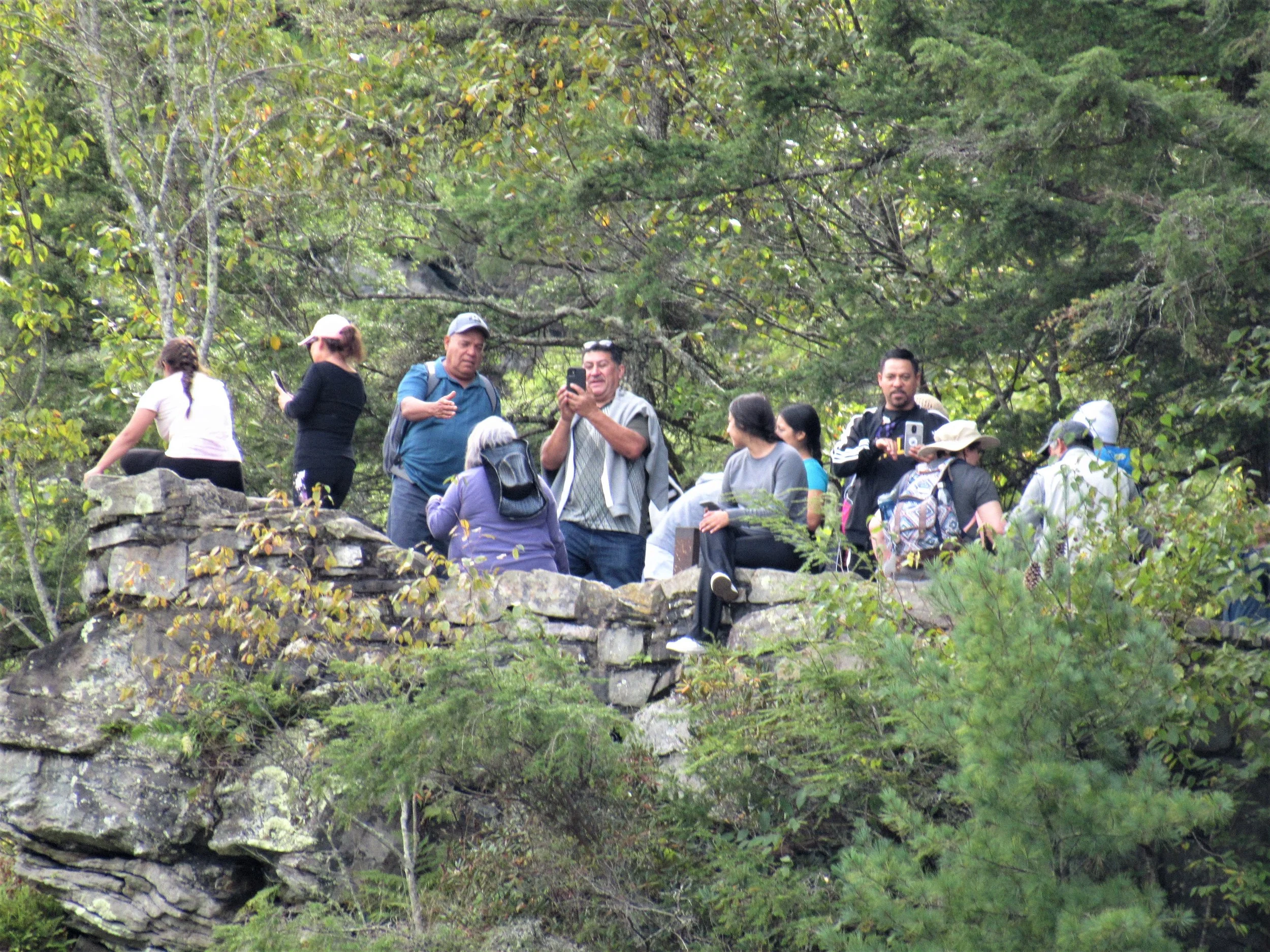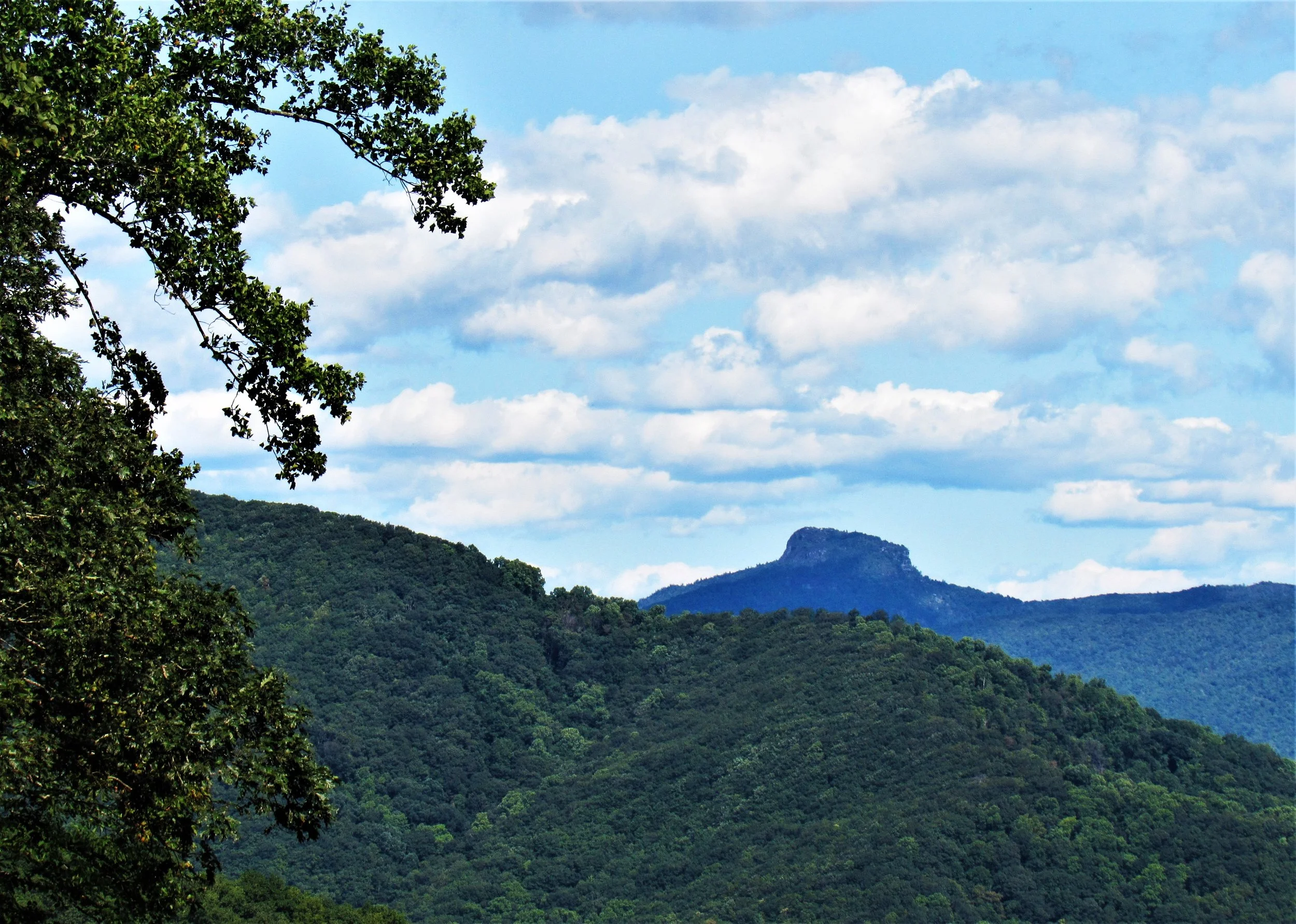The Linville Gorge Wilderness and Its Connection to the Boone and Bryan Families
By Robert Alvin Crum - copyright 12 May 2025
The Linville Gorge Wilderness is also known as “The Grand Canyon of North Carolina” and one of only two wilderness gorges in the Southern United States. It’s maintained by the United States Forest Service, situated inside the Pisgah National Forest northwest of Morganton, North Carolina, and comprises 11,786 acres around the Linville River. The river is about 1,400 feet below the ridge of the gorge. The Cherokee once inhabited this area and called the river Ee-see-oh, which literally translated means “river of many cliffs.”
There are popular tourist attractions in or near this wilderness such as Linville Falls, Wiseman’s View (a rock outcrop near the center with a spectacular view of the gorge), and Linville Caverns. Some landmarks in the Gorge are Shortoff and Hawksbill Mountains and the Chimneys and Sitting Bear. Table Rock Mountain is a prominent and distinctive peak, which the Cherokee called “Attocoa,” and it was a mystic altar for their sacred ceremonies. Wildlife common to the area are bear, deer, fox, grouse, hawks, owls, vultures, wild turkey, copperheads and timber rattlesnakes.
One can park in a parking lot and hike to the river to see the falls, and there is a historical marker labeled “Death on the Long Hunt.” Part of the text reads:
“In 1766, along the banks of this river, William Linville and his son were killed by the Shawnee while on a long hunt. The Shawnee, who were on their way to attack the Cherokee, feared that Linville’s hunting party would discover their presence and alert the nearby Cherokee. Because the Linville party was on an extended hunt, lasting from 6 months to a year, they may have amassed a very valuable stash of fur – another likely reason for the attack. Today, this river carries the Linville name.”
A more detailed description of what happened to the Linvilles that fateful day can be found by examining the Draper Manuscripts. William Linnville (1718-1766) was a wealthy land speculator in the colony of Virginia and had also served there as a Captain in the local militia. He married Eleanor Bryan, the daughter of Morgan and Martha Bryan, and as their son-in-law, migrated with the Bryans and his own family to the colony of North Carolina around 1748. William settled in the Bryan Settlement in the Forks of the Yadkin and was one of the early land speculators there.
In 1766, William’s son, John, and a companion, John Williams, decided to go into the mountains to hunt for meat and hides. William Linville was in poor health but decided to accompany his son and companion to keep camp for them with the hope that the change would help improve his health. They had several horses as pack horses, and after traveling about sixty miles west and into the Blue Ridge Mountains, they set up camp about ten miles below present-day Linville Falls.
Early one morning and just before sunrise, William awakened his two young companions to tell them about his dream in which they would all be killed by Indians. He urged the two younger men to escape before they could be attacked, but William wasn’t well enough to go with them. Just then shots rang out, and William was shot and wounded. He begged the two young men to escape, so they sprang for their guns. More shots were fired by Shawnee, which killed John Linville. John Williams was shot through the thigh which fractured a bone, but he managed to escape into the forest and remained there overnight. The Shawnee scalped the Linvilles, packed up the desirable plunder and left with all but one of the horses.
After the Shawnees departed, John Williams crawled back into camp and found a horse that belonged to William Linville. Even though badly wounded, he managed to climb on to the horse and made the sixty-mile, slow and tortuous ride back to the Bryan Settlement. When he arrived in the Bryan Settlement, he advised the Linvilles and Boones about the attack and death of Captain Linville and his son. John Williams survived and eventually recovered, and Eleanor Bryan Linville gave him Captain Linville’s horse that had returned him to the Bryan Settlement.
Now for the question of what connection does this site have to the Boones? As I mentioned above, Morgan Bryan (1671-1765) was a land speculator in Virginia who brought his large family into North Carolina and settled in the Forks of the Yadkin in the 1740’s in the area became known as the Bryan Settlement. Migrating with him were his granddaughters Rebecca and Martha Bryan (daughters of Joseph Bryan, who was Morgan Bryan’s first born). These Bryan sisters married brothers Daniel and Edward Boone, respectively. While still living in Virginia, William Linville (1718-1766), married Morgan Bryan’s daughter Eleanor Bryan (1722-1794), and he served as a Captain in the Augusta County, Virginia militia. The Linvilles also moved to the Bryan Settlement at about the same time as Morgan Bryan. Squire and Sarah Boone (parents of Daniel Boone) and their family migrated to the Bryan Settlement in 1750. One of their sons and Daniel’s brother, George Boone, married William Linville’s daughter Ann around 1763. Needless to say, these families were not only friends and neighbors but also many were related by marriage. (Please see the Boone – Bryan Chart to better understand these family connections.)
Since Daniel Boone was married to Mrs. Linville’s niece, and his brother George Boone’s father-in-law was Captain Linville, it is believed that both were in the party that went to bury the dead, especially since both were also familiar with the area as hunters.
On page 192 of Draper’s The Life of Daniel Boone, you will find a description of the place where William and John Linville died that fatal day in 1766 as:
“…on a clear and rapid mountain stream, a considerable branch of the Catawba [River] of about fifty miles in length, in Burke County, North Carolina, which has ever since borne the name of Linville River to perpetuate the misfortunes of these fearless border hunters. Their fatal camp, it is believed, was located not far from the bluff of the Short-Off Mountain, on the eastern bank of the river and about ten miles below the Falls, a beautiful cascade of from eighty to one hundred feet descent. This attack was made by a band of Northern Indian warriors.”
Countless times I have driven east from my home in Burnsville and through what is known as the High Country to the Town of Boone, North Carolina. While driving north on the two-lane Highway 221 just south of the Town of Linville, I see a green sign with white lettering showing the distances from Linville and Boone. Both names together on this sign always reminds me about the connection between these two families and that tragic day of the death of Linville father and son in 1766.
Most people don’t know the source nor why the Linville name is so common in our North Carolina mountains in Burke and Avery Counties. The list includes the Town of Linville, Linville River, Linville Falls, Linville Caverns, Linville Mountain, Linville Gorge, Linville Gorge Wilderness, Old Linville Road, and Linville Falls Highway, which is the stretch of Highway 221 that I mentioned above.
I recently had a conversation with a historian who mentioned that she and her husband were married in the Linville Gorge Wilderness, and I commented that it would have been such a beautiful place to be married. I then asked her whether she knew the history behind the name of the Gorge. When she answered, “no,” I told her the story that I just told you. She’d never heard it and seemed fascinated by the history of the place where she was married. There is so much history about the Boones and related families and the places named for them, and, frequently, it’s beautifully hidden in plain sight.
Sources:
Bryan, Jr., James K., “Morgan Bryan: 1671 – 3 Apr. 1763”, Dictionary of North Carolina Biography, 6 Volumes, Edited by William S. Powell, University of North Carolina Press, Chapel Hill, NC, 1979-1996.
Draper, Lyman Copeland, Draper Manuscripts, State Historical Society of Wisconsin, Madison, WI.
Draper, Lyman Copeland, Belue, Ted Franklin, Editor, The Life of Daniel Boone, Stackpole Books, Mechanicsville, PA, 1998.
McMurtry, Ed.D., David Cornelius, Bryan, Ed.M., David Randall, Weiss, Kathryn Horton, Morgan Bryan (1671-1763), A Danish-Born “Irish Immigrant” and Some of His Antecedents and Descendants, Vol. I of Two Volumes, Mil-Mac Publishers, Lexington, KY, 2007.
Ramsey, Robert W., Carolina Cradle: Settlement of the Northwest Carolina Frontier 1747-1762, The University of North Carolina Press, Chapel Hill, NC, 1964.
Spraker, Hazel Atterbury, The Boone Family, The Tuttle Company, Rutland, VT, 1922.
Weiss, Kathryn H., Daniel Bryan, Nephew of Daniel Boone: His Narrative and Other Stories, Self-published by Kathryn H. Weiss, 2008.
United States Forest Service Interpretive Sign at Linville Falls





